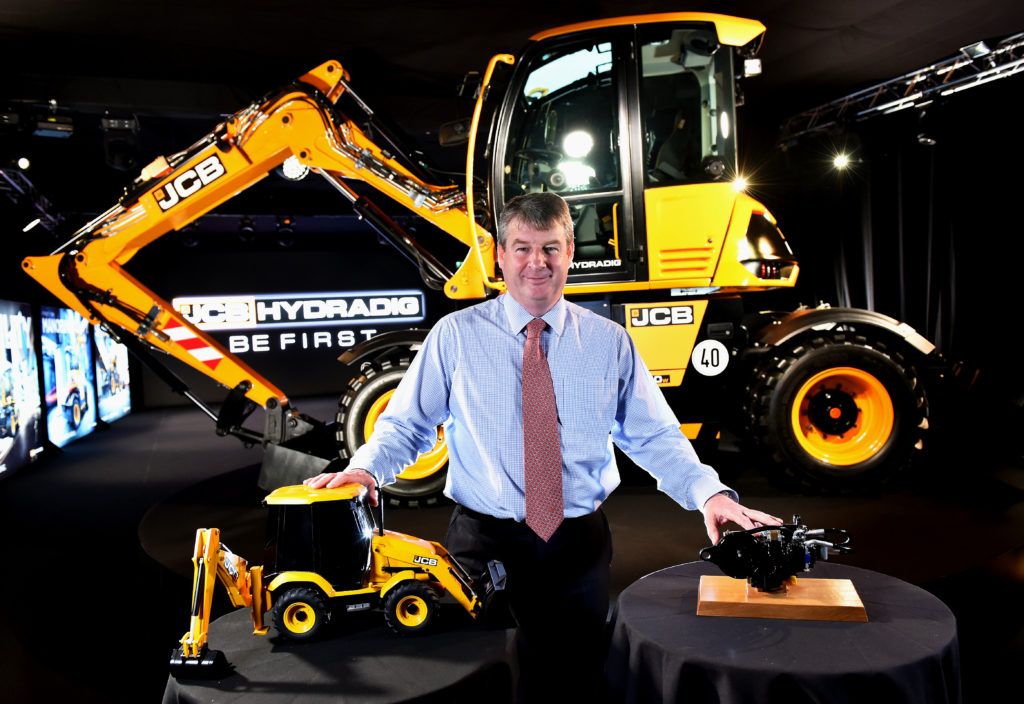Russell Baker, territory manager, UK & Ireland for Hyster Europe, discusses how the use of battery powered forklifts is changing
Q: When did battery powered lift trucks become a focus for Hyster Europe?
A: The introduction of the Hyster® XN and XNT series’ of electric forklifts back in 2008 cemented Hyster as a world class provider of low energy consumption trucks, with reduced maintenance requirements, minimised operating costs and zero emissions.
Our plant in Craigavon, Northern Ireland, UK, started manufacturing battery powered trucks in 2008 and is the European source of all Hyster® 1.3 – 3.5 tonne Electric counterbalance lift trucks. Previously, electric truck production for Europe was in Irvine, Scotland.
Today, thousands of different types of forklifts are manufactured each year at our UK plant with a large percentage of these being exported through Hyster® distributors to customers across Europe, Russia, Africa and the Middle East.
Hyster Europe now offers a varied range of electric trucks, with powerful, robust and high capacity trucks available alongside small, three-wheel electric forklifts which benefit from optimal energy efficiency.
Q: Are electric lift trucks now the best choice, even in outdoor applications?
A: It depends on what the trucks will be doing as to what the customer should choose. The right choice of forklift can significantly affect the overall performance and cost of an operation and in some instances, an ICE truck may still be more suitable.
However, we are seeing some businesses making the move to electrics, as in the right circumstances it can offer improved efficiency, particularly in terms of battery power, and the associated low cost of ownership, including maintenance costs. Electric trucks are also popular with those operations looking for environmentally friendly operation, as they produce zero emissions.
In the past, it would have been more typical to see electric trucks indoors, on ‘light’ duties. However, it’s now common to see Hyster® J series electric forklifts working outdoors, carrying out the same demanding tasks as IC trucks, with capacities up to 5.5-tonnes. They can be found even in tough industries such as foundries, recycling centres and construction materials applications.
Q: So, when is an electric forklift the right choice?
A: It depends on many factors and we work closely with our dealers and end customers to find the best solution for different application needs. However, in general, electric lift trucks with lead acid batteries are still often considered the best option for many indoor logistics operations.
For example, in busy logistics applications will benefit from efficiency and performance comparable to LPG/diesel alternatives and a potentially lower cost of ownership where savings can be made with just one lift truck. These may be multishift operations so forklift batteries can be exchanged easily between shifts without regular opportunity charges – we offer several battery exchange options for make this quick and simple.
However, these applications need the space for a charging room and to avoid downtime, must have strict processes in place to make sure batteries are charged to keep operations running. They also need a weekly maintenance and equalisation schedule.
Q: What about lithium-ion batteries?
A: Lithium-ion is becoming a popular power option for Hyster® electric lift trucks. It is an increasingly common choice in the food industry, for example, where operations are mostly indoors and there is a priority to reduce contamination. Lithium-ion has no acid which could spill and no fumes – hydrogen and other gases can be produced by lead acid, which are unwelcome in clean food production and storage areas.
Lithium-ion batteries do not need the high levels of maintenance that their lead acid counterparts require, and they allow for opportunity charging during planned breaks and lunch time. This ‘top up’ approach can simplify operations as you only need one battery, not two. Plus, over a period of years, lithium-ion may work out cheaper in the right application, with lower total battery costs.
However, there are infrastructure considerations when it comes to charging, so lithium-ion won’t be the best choice for everybody.
Q: What does the future hold for Hyster electric lift trucks?
A: Electric lift trucks at a lower capacity continue to be a core part of our product offering. However, there are interesting changes at the higher capacity end of the market where Hyster is pioneering the technology on much larger machines.
We currently have projects underway for the Port of Los Angeles in the US and the Port of Valencia in Spain where we are developing Hyster® electric container handlers and a ReachStacker. These zero-emission machines incorporate electricity at high voltage as the main energy source to power fully electric motors.
Testing has shown that the machines in development offer comparable performance to the equivalent Hyster® IC models and provide excellent energy efficiency and a low cost of ownership when matched to the right application requirements.
The trucks in development also feature patented Hyster® energy recovery systems, which recover and store energy from lowering loads and braking, which helps to increase uptime through longer periods between charges, while also helping to reduce the overall energy costs.
Hyster is celebrating its 90th anniversary while Hyster Europe is marking 20 years of producing electric lift trucks in Craigavon, UK





